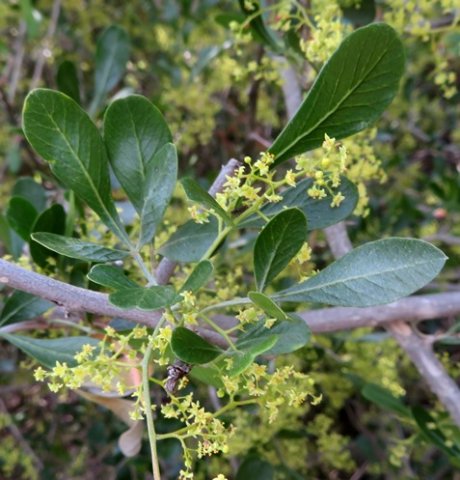Searsia

Author: Ivan Lätti
Photographer: Thabo Maphisa
Searsia is a genus of the Anacardiaceae or mango family comprising trees and shrubs. Commonly known in South Africa as karee and taaibos (sticky bush), the genus used to be known scientifically as Rhus. Some species are spiny, while many have lenticels on young branches.
The leaves are alternate, in southern Africa usually trifoliolate with entire, toothed or scalloped margins. Searsia leaflets are usually more variable than their flowers, for identification purposes unfortunately also within some of the species. Petioles are common, often winged, while petiolules are usually short or absent.
The leaves are resinous, tending to exude a smell of green apples when crushed and to exude a watery liquid. There are tiny resin canals at Searsia petiole bases, absent from Allophylus, a similar genus. Allophylus leaflets have hairy pockets in the vein axils on lower surfaces, absent from Searsia.
The usually large inflorescences of Searsia are terminal or axillary panicles with bracts present, the flowers small. Most species are dioecious, while bisexual flowers are rare. The calyx is usually five-lobed, its segments overlapping and sometimes unequal.
The usually five petals are mostly inconspicuous, the lobes mostly longer than those of the calyx. Male flowers have five stamens with rudimentary pistil. The female ones usually have ovoid, three-part ovaries with three styles, often also five staminodes.
The small, indehiscent fruits are globoid to flattened drupes, clustered in many-fruited heads. The seeds are kidney-shaped.
Searsia species tend to hybridise easily in nature, complicating their identification. There are about 200 species in the tropical, subtropical and temperate regions on earth, about 75 of which occur in southern Africa.
The plant in picture is Searsia lucida (Leistner, (Ed.), 2000; Coates Palgrave, 2002; Schmidt, et al, 2002; Pooley, 1993).

